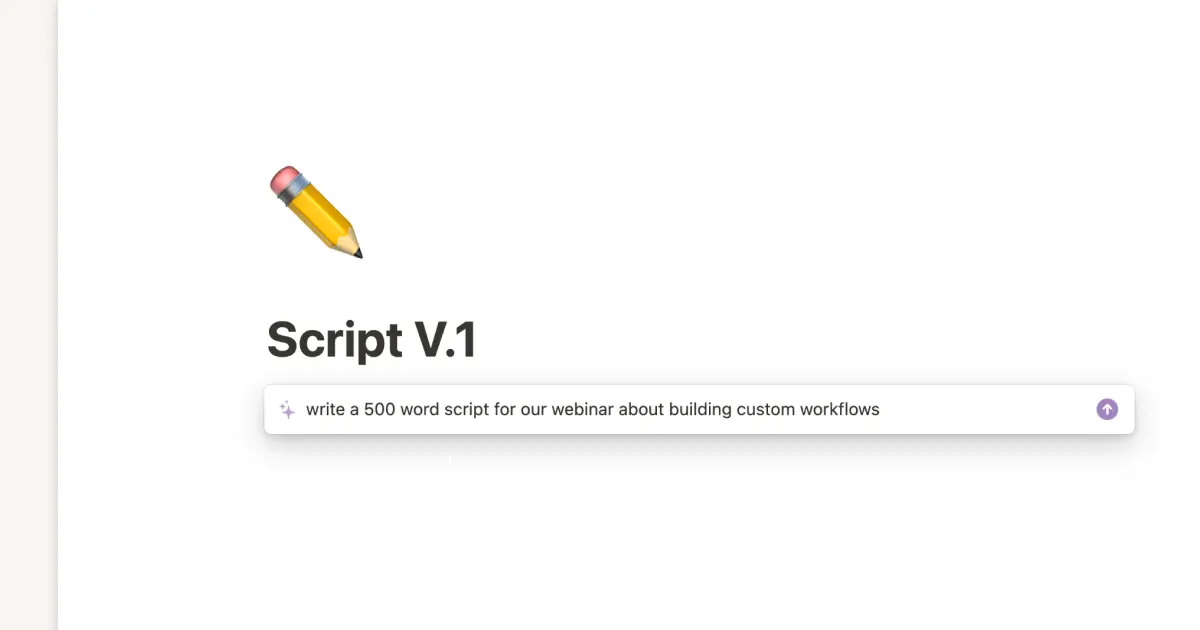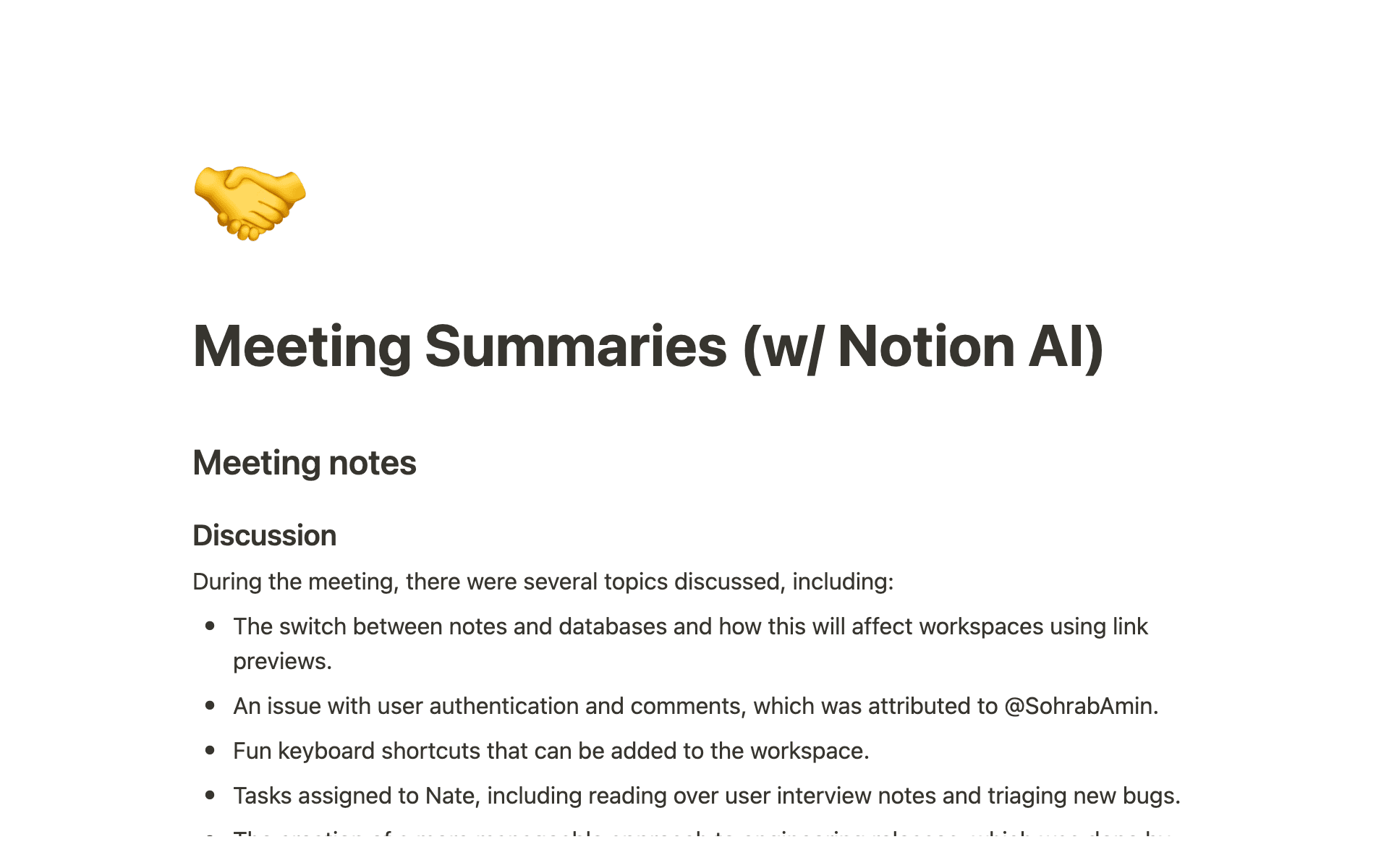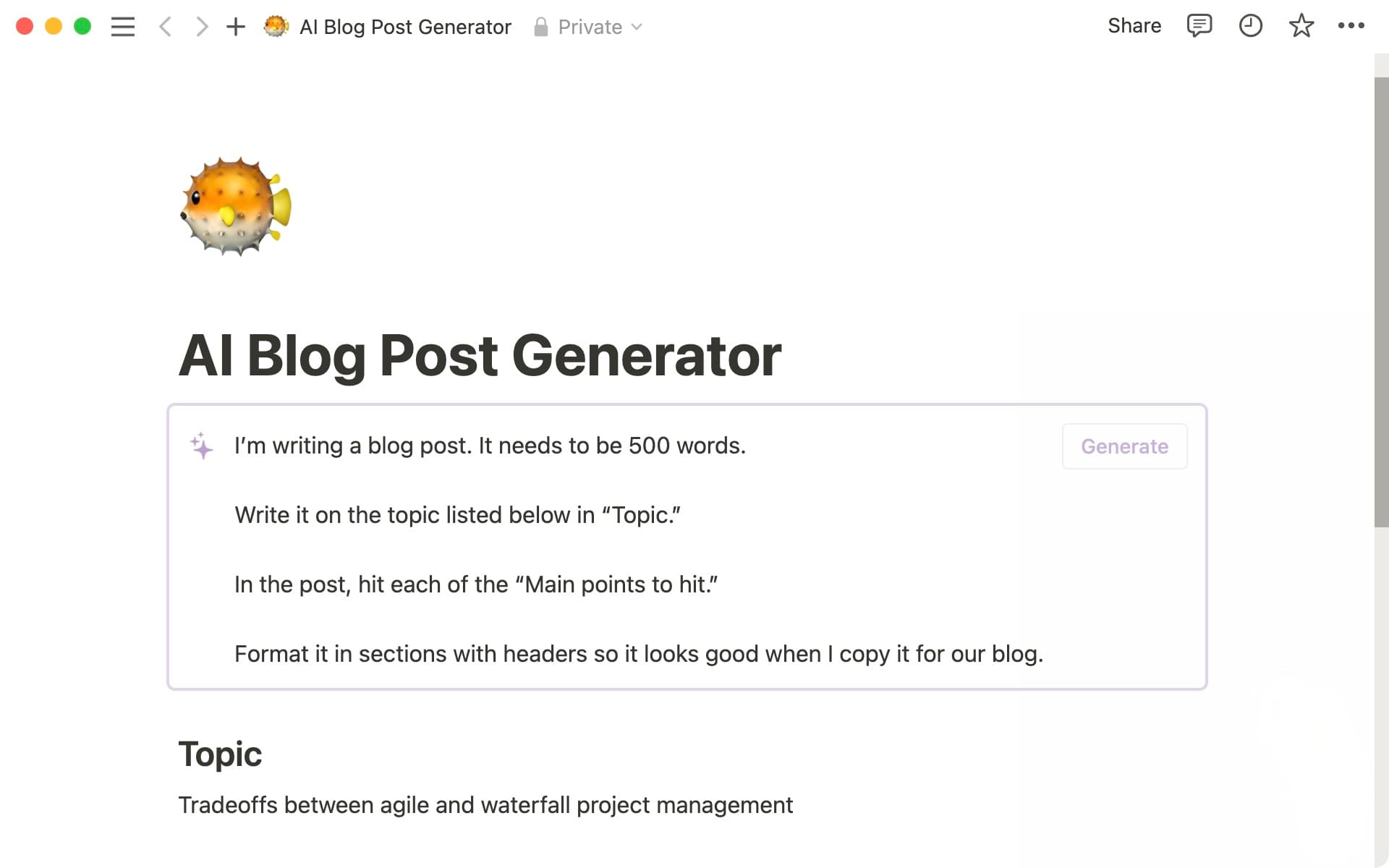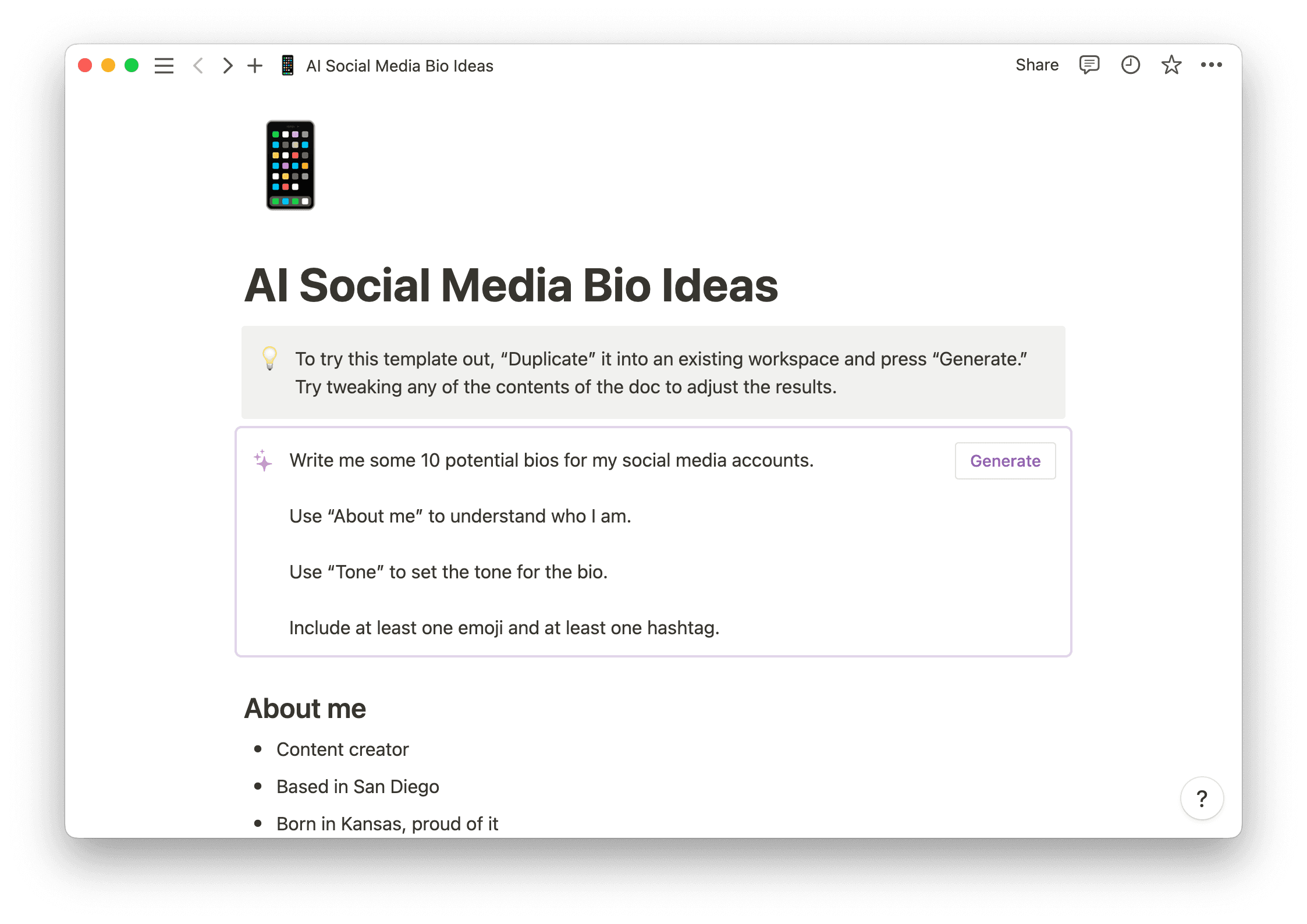Technology is growing at a pace that's nothing short of extraordinary.
Artificial intelligence (AI) — once a sci-fi dream that seemed impossible — now pervades our everyday lives, from predictive text on smartphones to voice assistants in homes.
But AI is good for more than just unlocking your phone with your face. As it continues to become more and more advanced, content marketers and business professionals can use it to write in-depth content with the same tone and flow as human words.
On the one hand, using AI-generated content can be like having an army of creators at your disposal, working tirelessly to write and edit content. But on the other, can an algorithm genuinely replicate a human's creativity and skill?
What’s AI-generated content?
In its simplest form, AI-generated content is anything written by a machine rather than a human. Algorithms analyze vast amounts of data to develop human-like content based on machine learning. They can produce anything from simple AI-generated sentences to full-blown blog posts — or even lifelike audio and video recordings.
The quality of AI-generated text and images can range from nonsensical output to high-quality content that is nearly impossible to distinguish from the work of a human. Although it’s a life-changing tool, this dichotomy makes it something to approach with care.
How does AI-generated content work?
AI content generation starts with training. The AI needs to absorb information from a database of examples to learn what basic sentences and paragraphs look like. As it digests millions of articles, stories, or scripts, it begins to understand the content’s structure.
If you’re working with OpenAI’s ChatGPT or Notion’s AI, the company’s already done the work for you. The only data input you need to worry about is any specific examples you want to give for the AI to replicate. If you need it to work on a new product description for your website, it’s a good idea to show it a few existing ones so it knows what tone you’re going for.
Then the AI's ready to generate content. You’ll provide it with a prompt, and the system uses the patterns it has learned to create content that matches its training data's style and structure.
Results vary across platforms. Some outputs have made headlines by imitating famous writing tones and styles a little too closely. Others are virtually indistinguishable from original, human-written text. And in most cases, it needs some editing and fact-checking to get it up to par.
Once AI models are up and running, the companies behind them update and improve them. This iterative process means that, over time, AI content becomes more refined, attuned to context, and better aligned with the target audience's preferences and requirements.
What does this mean for content creators?
AI has the potential to significantly reshape content as we know it — and in some ways, it already has. Content creators use AI to automate the mundane parts of their jobs, such as research, writing initial drafts, or creating multiple versions of the same piece of content. With AI covering the tedious tasks, creators can focus on the unique and creative aspects of their work.
At this point in time, the human role in content creation remains irreplaceable. AI can’t yet fully replicate human creativity or intuition. It doesn’t have the power to understand cultural nuances, empathize with human experience, or use critical thinking to tell wrong from right. But that doesn’t mean it can’t be a useful tool.
Pros of AI content
Using AI to generate content is a popular path for a reason. It’s efficient, cost-effective, and requires less work overall. Here’s more about the benefits:
Efficiency
AI can create content at the click of a button, which is hard to beat in terms of efficiency. When you set the proper parameters, it can write copy in just a few minutes (or even seconds) — which previously would have taken hours or even days for a human to do. AI also automates time-consuming tasks like filtering through emails, saving content creators valuable time and resources.
Scalability
The nature of AI naturally makes it well-suited to scale across large projects. It works for teams that want to generate more content without adding additional headcount. Whether producing SEO-optimized blog posts or developing graphics, AI can manage bulk tasks without expanding team size. This scalability ensures that organizations can remain agile and responsive to market needs, regardless of size.
Consistency
Since AI analyzes vast amounts of information when generating content, it can produce consistent results that align with the average in the data set. This is a huge plus for content creators who want to maintain a consistent style. And AI tools often allow for custom rules and guidelines to further improve consistency.
Cost-effectiveness
When AI automates time-consuming tasks like meeting summaries for you, you can reallocate that extra budget to other, more impactful, business areas. On top of that, a lower risk of human error also reduces costs related to corrections and revisions.
Cons of AI content
Like any business process, AI-generated content has its downsides. No machine can do the exact same job a human can, and AI is no different. Here are some cons to look out for:
Unoriginal content
No matter how advanced the machine, it lacks the human touch of creativity. AI content relies on predefined patterns from past content to make logical sense. While its outputs might be unique in structure, it’s pulling from words that already exist, which might make it seem dull or unoriginal — and can even lead to plagiarism. Humans provide an innovative flair that’s difficult to replicate.
Lack of nuance
Machines do best with logic and consistency. Subtle human elements like satire or regional slang can be tricky for AI. Even with advanced learning capabilities, certain cultural or human subtleties might be beyond its grasp. This may change in the future, but for now, it's hard to imitate the experience of being human.
Misunderstanding context
AI needs help understanding context, especially with industry-specific jargon or niche topics. Unless its dataset includes the specific examples it needs, it may end up creating inaccurate or irrelevant content. Additionally, as the context changes over time, the information used to train the AI can become outdated and unrelatable.
Dependent on data
The quality of AI-generated content relies heavily on the quality of its training. Poor or biased data can lead to misinformation. And it can take time to determine whether the data is accurate.
How to use AI-generated content: 5 ways
AI opens the door to numerous advantages for people looking to produce regular content. The possibilities are truly limitless, but five use cases have emerged as some of the most popular applications:
1. Content creation
Got a writer’s block? AI content writing makes blog or social media posts faster and easier for the masses. AI can handle the heavy lifting, such as creating outlines, writing pitches, or brainstorming ads. Content marketing teams can then spend more time on strategy and less time managing the tedious tasks involved in content creation.
2. Email marketing
After feeding AI data about user behavior, demographics, and preferences, it can create email campaigns to reach specific audience segments. This can lead to increased open rates and better customer experience. AI can also automate lists, send emails, and run reports on the results.
3. Social media management
Managing multiple social media platforms becomes a lot easier with AI on your team. It could determine the best time to post, tweak copy to resonate with the target audience, and generate audience-friendly bios. It’s also a great way to maintain a consistent voice.
4. Customer service
Chatbots, driven by AI, can handle queries round-the-clock, offering timely, accurate assistance. Their adaptive learning capabilities help them resolve more and more issues with each interaction.
5. Content curation
Think of how TikTok gained a billion-dollar user base from its algorithm — that’s the result of great AI. It can analyze behavior and recommend relevant content, improving engagement and boosting conversion rates. Over time, user profiles become detailed with personal preferences, which helps the AI pitch ideas and improve the quality of its curation.
Create quality content with Notion AI
When using AI to create content, finding a balance between efficiency and quality is crucial. Notion offers all the tools and templates you need to streamline your workflow and produce engaging content.
Use Notion’s AI tools, such as the blog post generator and script generator, to create quality content faster and more efficiently. Use Notion AI today and unlock the endless possibilities of AI-powered content creation.







